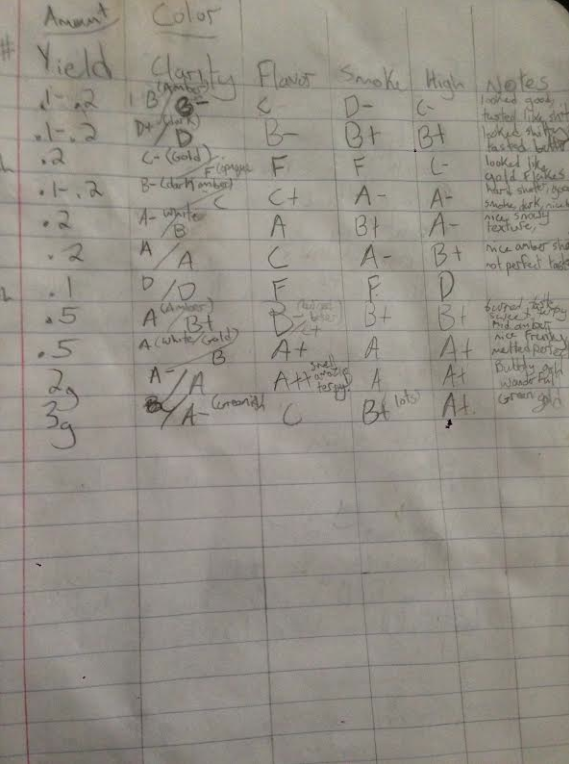@herbivore21 what kind of yields are you pulling on your first and second wash using iso
First wash is 1.3g of crystal clear shatter from 1 oz of trim/shake (from very well cured high end THC Bomb buds). Second wash tends to be more like .7-1g 3rd and 4th tend to be 1g or so. Yes, I still get great dark shatter from a 4th run, which still gets you absolutely trousers on head stoned.

That's what I'm thinking too. Any guesses on what size membranes work best? I've been researching a few "membrane supply companies", am just trying to figure out the best way to even call them up to ask "hey, what membrane do I want to use to separate cannabinoids from a quick wash ethanol?"
I made a still for under $10 with a mason jar with a hole cut in the top, a 25' piece of polyethylene tubing, a hole in a bottom of a cup (to hold ice/ice packs in), a funnel with the small end facing the cup and sealed with duct tape (acts like an "umbrella over the bottle to keep water from melting ice out), and a bucket with a handle to hold the bottle to recapture the alcohol as well as hold any water/ice draining out of the cup. This works wonderfully. I don't love the polyethylene tubing, but according to the spec sheets, it is safe with ethanol (and iso).
I've been seeing other members saying the goal in using vacuum purges isn't just to purge, but also to keep temps as low as possible. I've read tons of arguments for both sides of the debate. Is there links to conclusive studies/documentation showing the benefit of lower temperature vs. higher temp purges and the final consistency of the product.
lol - Yah, I learned my lesson the first time I used my aeropress - I was pushing way to hard, and then made it to a slick spot and slammed the plunger down and had everclear go EVERYWHERE all over the place. I just stood there staring, and blinking in amazement at the stupidity of what I'd just done / how much was wasted.
You would need to filter the fluid down to something in the order of 25-50 microns. This should keep the kief itself out, whilst allowing the fluid to flow reasonably well. I would attempt 30 or 40 microns first. I am not sure completely of this, as I just use plain coffee filters.
Remember, you don't need anything fancy! It is all in the method, doesn't matter how crude your tools are, but FFS get an induction cooker, there is no easier way to take care of the evap in a completely safe, energy efficient and majorly fast way!
Also, vis-a-vis the talk about vacuum purges for slowing the process. Dude, I am saying this debate is moot. 2 hours of induction heating in the manner I described will get you full and comprehensive purge and rock hard shatter (seriously, I have a 2g marble of dark reclaim shatter which is as hard as a golf ball, made all of it in 3 hours and that was 3 small separate runs).
As I have learned as a professional scientist, you need to ignore the beard stroking and pontification and focus on results.

This shatter/crumble game is super, super easy. The reason people have such trouble with alcohol based extractions around here (especially QWISO) is because they don't understand the process they are doing and just listen to whatever gets repeated the most around here. Of course, this is naturally all we can do when we are not sure yet of what to do. I am here to say that I have the experience and the know how, and most importantly the results to tell you that you can get absolutely mind-bending rock hard crystal clear shatter without worrying about vacuuming, without worrying about long evaporation times and in the time it would take you to have a feature length film blaring in the background as so many people strangely seem to do.

Remember, the debate/controversy is unimportant. There is no democracy when it comes to science. There are only supported and unsupported claims.

If you find something that works, pat yourself on the back, take the time and learn the theory to understand why it works, then share it with your peers on this wonderful message board






